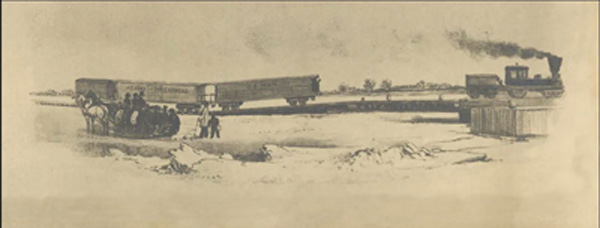Rails were placed on ice when ferries could not cross the frozen Susquehanna
Frostbite sailors have had a mild season thus far, nothing like the winter of 1852, which was particularly frigid, completely halting ferry traffic across the frozen Susquehanna River. Could a freight train traverse a frozen body of water here in the relatively warm climes of our Chesapeake Bay? It can, and indeed it did.

From 2007-2017, The History Channel aired a reality TV series called “Ice Road Truckers,” accounting the courageous routine of navigating tractor-trailers across frozen lakes of Canada’s Northwest Territories. The 2004 animated film “The Polar Express” contains an exhilarating, albeit fictitious scene of a passenger steam train sliding uncontrollably across a frozen body of water, presumably near the North Pole, where it was headed that night. But back to the Chesapeake region.
The first railroad bridge to cross the Susquehanna River wasn’t built until 1866. Until then, ferry boats transported passenger and freight rail cars across the river about .8 miles between Havre de Grace and Port Deposit, en route between Philadelphia and Baltimore. With the Susquehanna unexpectedly frozen over that cold winter, an alternative approach was needed.
More than 150 years before viewers enjoyed watching the icecapade-like transports of “The Polar Express” and “Ice Road Truckers,” officials at the Philadelphia, Wilmington, and Baltimore (PW&B) Railroad Company had a simple—yet risky—vision of rails on ice to resume transportation service over the frozen solid Susquehanna River.
Completed on January 15, 1852, the railway carried freight trains right across the frozen surface of the river. Historical accounts estimate that 1378 rail cars carried 10,000 tons of freight over the course of 40 days before the tracks were removed and ferry service resumed. Horsedrawn sleighs carried passengers while simultaneously towing the freight cars on rails across the ice. Not a single incident was reported throughout the endeavor.
Railroads in other parts of the country followed suit in the decades that followed, including an ice bridge over the frozen St. Lawrence River in 1860 and one over the Missouri River in 1979.
by Steven Toole




